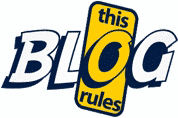The Beat Generation was a unique cast of characters who convened at the Beat Hotel to create some of the most authentic and real poetry and prose that ever existed. The Beats wrote about real life as it happened. They were also infamous for their notorious lifestyles as well as their writings. Today we celebrate the forefathers of the Beat Generation; John Clellon Holmes, Jack Kerouac, Allen Ginsberg, William Burroughs, and Neil Cassady.
John Clellon Holmes
(March 12, 1926 – March 30, 1988)
Holmes was considered the author of the first “beat” novel “Go” in 1952. The novel featured his life events with such luminaries as Jack Kerouac, Neal Cassady, and Allen Ginsberg. Considered Kerouac’s closest friend, Holmes traveled and documented their adventures. The word “beat” in the context of the writers happened when Jack Kerouac told Holmes “You know, this is really a beat generation.” and Holmes used it in an article published in The New York Times Magazine entitled “This Is the Beat Generation” on November 16, 1952. Holmes credited Kerouac with the term and in turn inspired the novel “Go”. Holmes wrote fourteen books of poems and essays before dying of cancer in 1988.
Jack Kerouac
(March 12, 1922 – October 21, 1969)
As an American novelist and poet, Kerouac was best known for “On The Road”, a novel he completed in April 1951. The autobiography describes Kerouac and his friend Neal Cassady’s road trip across the United States and Mexico in the late 1940’s. The book also showed the relationship between Kerouac and other beat writers of that era. Kerouac also stated that the novel was, in part, a trip in search of god. He was arguably the most recognized of the beat writers.
Allen Ginsberg
(June 3, 1926 – April 5, 1997)
An American poet who was a leader of the Beat Generation in the 1950’s, Ginsberg opposed materialism and sexual repression. He was also vehemently against war. Ginsberg’s most famous work “Howl”, a poem about heterosexual and homosexual subject matter was innovative in the 1950’s. He also stated that “Howl” was “his unresolved emotions about his schizophrenic mother”. His last poem, “Things I’ll Not Do (Nostalgias)”, was written on March 30, 1997, days before he died. His final days were had by calling everyone in his address book and saying goodbye.
William Burroughs
(February 5, 1914 – August 2, 1997)
Burroughs was an American novelist, short story writer, essayist, painter, and spoken word performer in the Beat Generation. In 1943, he met Jack Kerouac and Allen Ginsberg in New York City. These three men became the cornerstone of the Beat Generation. Best known for his third novel Naked Lunch (1959), which went to court against U.S. Sodomy Laws. On September 6, 1951 Burroughs accidentally shot and killed his wife, Joan Vollmer in a drunken game of ‘William Tell’ in Mexico City, Mexico. He spent thirteen days in jail until his brother bribed Mexican lawyers and officials to release Burroughs on bail while he awaited trial for the killing, which was ruled a culpable homicide. He would finally get off the hook by bribing witnesses to say it was accidental. Burroughs died on August 2, 1997, from complications of a heart attack he suffered that day in Lawrence, Kansas.
Neal Cassady
(February 8, 1926 – February 4, 1968)
Cassady was a major figure of two pertinent groups. The Beat Generation of the 1950’s and Psychedelic Generation of the 1960’s. He met Ginsberg and Kerouac in 1947 at Columbia University. Cassiday and Ginsberg began a twenty year sexual relationship starting in the 1950’s. He began to move away from the beat philosophy around that time and started working at Southern Pacific Railroad. Cassady returned in the early 1960’s and joined the Merry Pranksters after meeting Ken Kesey in the summer of 1962. Cassady was immortalized in Tom Wolfe’s book “Kool-Aid Acid Test”. On February 3, 1968, Cassady was at a wedding reception in San Miguel de Allende, Guanajuato, Mexico. He left a party and began walking the railroad tracks to go home. Along the way he passed out in the cold wearing only a T-shirt and jeans. He was found the next morning and transported to a local hospital. He died a few hours later on February 4th, four days shy of his forty-second birthday.






Leave a Reply